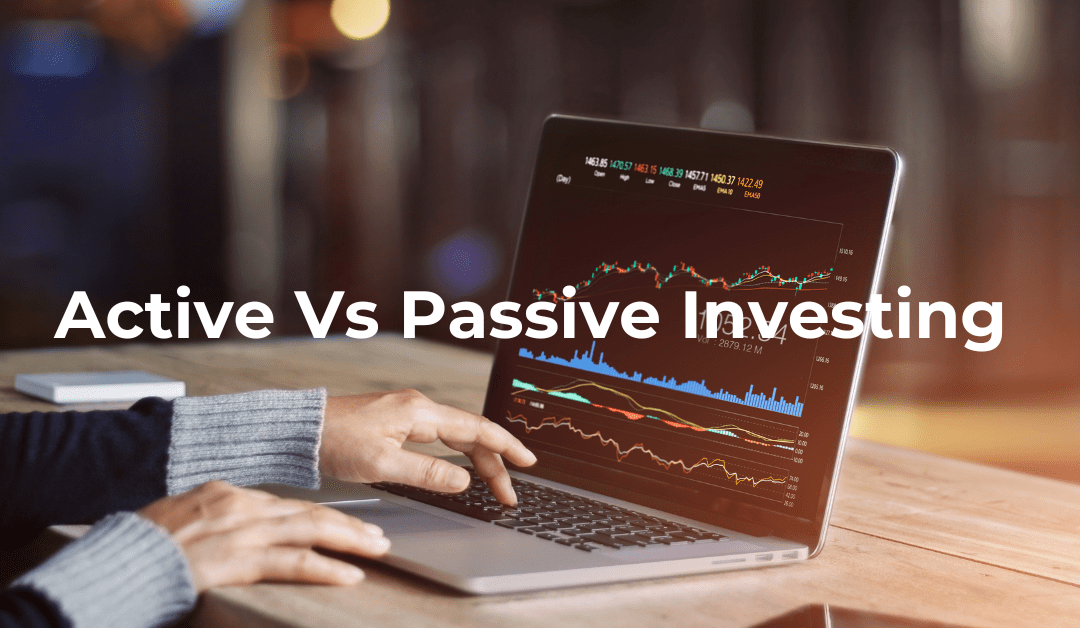Lots of options are associated with investing in the stock market. The method of handling investments is one of the largest choices. Passive trading and active trading are two of the strategies. Both of these approaches have advantages and disadvantages which depend on the goals to achieve, time, and the level of risk. The article simplifies the essentials in a comprehensible manner, and thus it is easy to make decisions on what suits you best.
What Is Passive Trading?
Passive trading is long-term oriented. The aim is to make investments and to maintain stocks, index funds, or other investments over the long run. This method does not require frequent purchases and sales. It is based on the premise that markets are most likely to increase in value in the long term despite fluctuations in the short term.
Individuals who employ passive options tend to invest in market index funds of the market. These funds reflect on the performance of the whole market or part of it. It is an automated process, and there is minimal requirement for monitoring the markets daily. There is a limited number of trades, and passive trading may allow for minimizing the fees or taxes. It is also less time-consuming and thus a good option for those who do not wish to engage in movements of market movements.
What Is Active Trading?
Active trading goes down a different route. It is frequent purchases and sales of stocks or other assets. It is done to exploit temporary price fluctuations. More attention and effort are needed in this strategy. The active traders can keep their positions for days, hours, or even minutes. They read market trends, charts, and news to make decisions. Some employ technical tools to forecast price movements.
This strategy will result in higher expenditures in terms of transaction costs and taxes because of numerous trades. And there is an increased risk as well. Rapid market fluctuations may cause profits, as well as losses. Trading can be an activity that is preferred by individuals who like to stay in touch with the market and make quick decisions. It frequently needs a firm knowledge of how the market reacts. It would be prudent to be familiar with the day trading rules to prevent incurring penalties or limitations on people who trade daily.
The Time Commitment Comparison
The time is one of the greatest distinctions between the two strategies. Passive trading does not need much attention each day. After investing the money, there would not be much left to do other than checking the money now and again, and keeping informed of the major events in the market.
Being an active trader is more challenging. It can entail spending time every day monitoring the movement of stocks, placing trade triggers, and responding to breaking news. To some, this is a full-time preoccupation. To others, it is a nightmare. Time is an issue. Passive investing might be more suitable in case of limited free time. Active trading might be an option when trading is exciting and it is possible to spend some time on it.
Risk/ Reward Calculation
There is a risk involved in any investment plan. Passive trading tends to have less short-term risk. Because it is planned to keep investments in the long term, fluctuations on a daily basis are not as critical. Although there is always risk involved, the risk is distributed over a long period.
Active Trading, however, is riskier in the short run. Losses can occur at a very fast rate since trades are made on short windows of opportunity. Even an experienced trader might make a wrong decision. The active trading may be exciting to some people and stressful to others as it is a fast-paced activity. It is relevant to select an approach that is associated with risk and personal comfort.
What Strategy Will Suit Your Goals?
There are various reasons why everyone invests. Some wish to save towards retirement, and others want to become wealthier in a shorter period. The correct plan will depend on what you desire and how engaged you wish to be.
The passive trade could be the most appropriate strategy in terms of long-term plans, such as saving to purchase a house or retirement. It is a less complicated way of letting your money multiply gradually over time. Active trading can be interesting to those who need faster profits or people who feel comfortable being active. It is more controllable, yet more knowledge is needed, and more effort are needed.
Conclusion
Passive and active trading provide an opportunity to make money on the market. They have their advantages and limitations depending on the individual who uses them. Passive trading is easy and gradual, and active trading is more complicated and quicker. It does not have a universal solution. The important thing is to identify a way that best fits your lifestyle and financial aims. Be it sitting back or remaining active, a clear plan can help you stay focused and more confident about what you are investing in.
